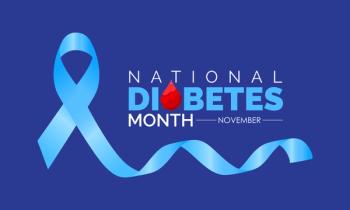
Out-of-Pocket Costs Increase for Patients with Multiple Chronic Diseases
As cost increases, patient adherence decreases among patients with multiple chronic conditions.
There is a growing body of evidence that suggests patients affected by more than 1 chronic disease may not be adhering to treatment due to financial burden. This not only can affect the health of patients but also complicates the job of the pharmacist.
The current practice of treating chronic diseases in isolation could lead to unnecessary prescriptions that financially strain both national health care systems and patients, according to a study published by BMJ Global Health.
The analysis examined the cost of a prescription not covered by insurance from 14 global studies including patients with multiple chronic diseases.
Specifically, the researchers examined out-of-pocket (OOP) costs for patients with diabetes, hypertension, stroke, cancer, arthritis, obesity, and depression.
The authors noted that patients with more than 1 of these conditions had high OOP costs for prescription drugs, which could ultimately have a negative impact on patient adherence. Elderly patients and patients from low-income households are particularly at risk for nonadherence related to OOP costs, according to the study.
“Patients may have financial support from insurance benefits to visit their general practitioners or go for medical check-ups, but the weakest link is the lack of financial support to pay for any medications prescribed,” study author Grace Sum Chi-En, PhD said in a press release. “Our research also found a common coping mechanism by some patients with high spending on medicines is non-adherence, whereby patients stop taking their medicines by failing to refill their prescriptions, which is a substantial healthcare issue.”
The researchers noted that OOP costs increased with the number of chronic diseases. Patient OOP spending increased 2.7% when examining the difference between 0 diseases to 1 disease.
Further, when increasing from 1 to 2 diseases, OOP spending increased 5.2%, and the increase from 2 to 3 diseases resulted in a 10.1% growth in spending, according to the study.
High OOP costs leaves little room for further medical spending among patients with multiple diseases. Additionally, patients may be more likely to skip doses or not fill prescriptions, which can lead to adverse events and even higher costs down the road.
This presents an issue, as chronic diseases require lifelong treatment.
“The nature of chronic diseases is that they require long-term management and usually cannot be cured, which exacerbates the high cost to patients for medicines over a long period of time,” Dr Sum Chi-En said. “It is imperative for healthcare policymakers to start recognizing this problem, in order to design better policies that offer financial protection on medicines for chronic diseases.”
In Australia, government prescription spending covers the cost of some chronic disease medication through Medicare. The coverage varies, however, and is limited to a certain amount per patient. The coverage can therefore be insufficient for patients with chronic diseases, according to the authors.
“As a result, individuals with multimorbidity experience inadequate health services, and high levels of out-of-pocket expenditures that are impoverishing and detrimental to their economic and social well-being. It’s time to design health system that meet the needs of this vulnerable group,” said co-author Rifat Atun, FRCP.
As the treatment of chronic diseases continues to be a global issue, pharmacists and other health care providers must be diligent in ensuring patients are adhering to treatment and connecting them with financial resources when possible.
Reference
Multiple chronic diseases leave patients with adversely high costs [news release] The Melbourne newsroom. February 7, 2018.
Newsletter
Stay informed on drug updates, treatment guidelines, and pharmacy practice trends—subscribe to Pharmacy Times for weekly clinical insights.


















































































































































































































